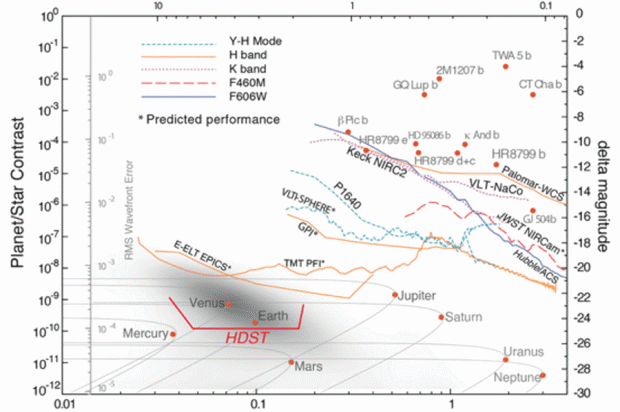
Figure v: Astronomer’s description of direct imaging capabilities of current and future instrumentation. The y-axis is the planet-star brightness described as a contrast ratio. The x-axis is the separation of the planet and star in angular dimensions of arcseconds. On the top right of the figure are plotted the (K-band) contrasts of some of the giant exoplanets imaged to date. In the lower part of the figure are plotted our Solar System planets as they would appear in reflected light around a Sun-like star at a distance of 10 pc. The curves delimit detection capabilities, such that planets could be detected above and right of each curve. The gray region in the lower left of the figure shows the predicted locus of terrestrial habitable zone planets for F-G-K (Solar-like) stars, not achievable until the launch of space missions (e.g., the red solid line denoting HDST). The capabilities of the large ground-based telescopes such as the Giant Magellan Telescope (GMT), the Thirty Meter Telescope (TMT), and the Extremely Large Telescope (ELT) are represented by “E-ELT EPICS and TMT-PFI,” and can detect planets orbiting nearby M dwarf stars which would have contrast around 10-7 to 10-8 and angular planet-star separations about 0.04 to less than 0.1 arcsec, depending on the star’s luminosity and distance from Earth. Figure and caption adapted from Lawson et al. (2012), Mawet et al. (2012), and Stapelfeldt (private communication 2015).



